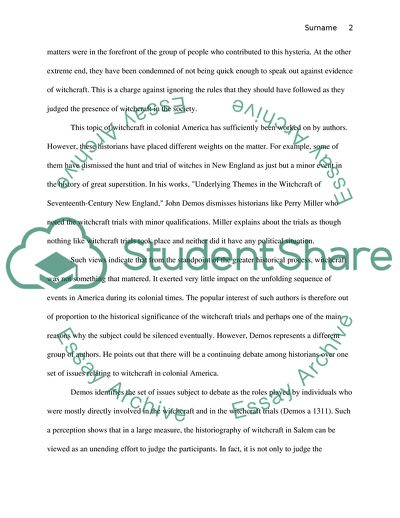Cite this document
(Witchcraft Trials in Colonial America Literature review Example | Topics and Well Written Essays - 2000 words, n.d.)
Witchcraft Trials in Colonial America Literature review Example | Topics and Well Written Essays - 2000 words. https://studentshare.org/history/1763010-witchcraft-trials-in-colonial-america
Witchcraft Trials in Colonial America Literature review Example | Topics and Well Written Essays - 2000 words. https://studentshare.org/history/1763010-witchcraft-trials-in-colonial-america
(Witchcraft Trials in Colonial America Literature Review Example | Topics and Well Written Essays - 2000 Words)
Witchcraft Trials in Colonial America Literature Review Example | Topics and Well Written Essays - 2000 Words. https://studentshare.org/history/1763010-witchcraft-trials-in-colonial-america.
Witchcraft Trials in Colonial America Literature Review Example | Topics and Well Written Essays - 2000 Words. https://studentshare.org/history/1763010-witchcraft-trials-in-colonial-america.
“Witchcraft Trials in Colonial America Literature Review Example | Topics and Well Written Essays - 2000 Words”. https://studentshare.org/history/1763010-witchcraft-trials-in-colonial-america.


